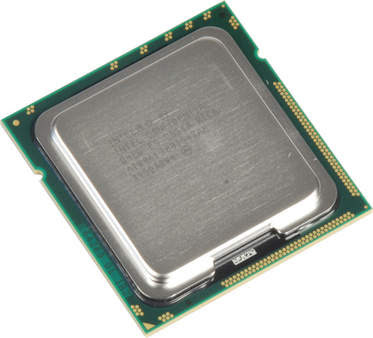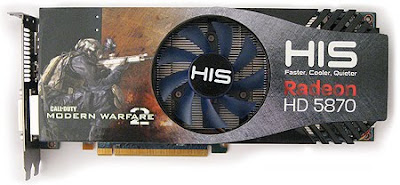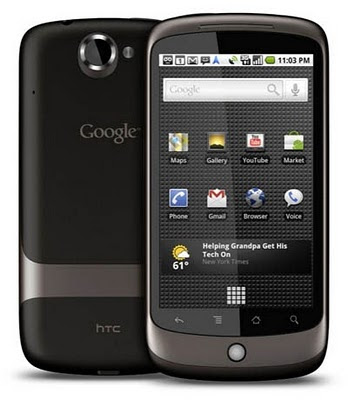
Gigabyte GV-R587SO-1GD SUPER OVERCLOCK Gigabyte's special sauce for its GV-R587SO-1GD comes in the form of a very high factory overclock, coupled with the ability to tweak the card's voltages using the Gigabyte OC Guru software. A large custom cooler completes the package. This card can be purchased from Newegg for $500, or about $110 more than typical Radeon HD 5870 reference models.
Speaking of the cooler, this is an impressive unit, as the temperature and noise benchmarks will show further into the story. It uses four heat pipes to pull the heat away from the GPU and a pair of axial fans to quickly dissipate it. Unlike the reference cooler, some of the heated air is forced back into the case. So, once again, good case airflow is a great idea.
As with our other Radeon HD 5870 sample, we only had the bare card to test. According to promotional images of the bundle, Gigabyte's bundle includes an install CD, an installation guide, a CrossFire bridge, two Molex-to-PCIe power adapters, and a DVI-to-VGA adapter. There is no value-added software to be had here. Instead, the engineers have focused exclusively on the hardware, and we're absolutely alright with that. The card comes with a three-year warranty, which is just what we'd expect from this class of hardware.
Gigabyte has gone out of its way to make the GV-R587SO-1GD stand out. You can tell this by looking at the PCB, which deviates significantly from the reference model, even though it's almost exactly the same physical size and carries the standard 1 GB of GDDR5 memory. The PCIe power connectors have been moved to the top of the card for easy access, which is a welcome change. Gigabyte claims that this card is part of its GPU Gauntlet program, meaning that the graphics processors are deliberately binned to ensure superior overclocking. We'll see if this bears out in the overclocking tests.
Despite all of its other differences, this Gigabyte card uses the same reference Radeon HD 5870 output bezel, complete with two DVI outputs, in addition to HDMI and DisplayPort connectors.
For a product with the words “Super Overclock” as part of its name, we have high expectations of default clock rates. The card does not disappoint, either. It's core clock is set 50 MHz shy of 1 GHz (that's 950 MHz), representing a 100 MHz overclock beyond AMD's reference design. Moreover, it sports a 1250 MHz memory clock, 50 MHz (200 MT/s effective) over the reference setting. To our knowledge, this is the highest factory overclock available on a Radeon HD 5870. Despite this, clock speeds drop to a low 157/300 MHz to save power, just as we'd hope to see.
OverclockingWhile this card's BIOS allows for overclocking speeds of up to 2000 MHz on the core and memory through AMD's Overdrive panel in the Catalyst Control Center (CCC), there is naturally no way it'd ever make it that high. While MSI's Afterburner utility doesn't allow for voltage manipulation on this board, Gigabyte does have its own robust overclocking utility capable of altering clock rates and voltages.
Using Gigabyte's utility, we were able to push the card to just over 1 GHz stably, eventually resting on a 1010 MHz core and 1325 MHz (5300 MT/s effective) configuration with the GPU voltage raised to 1.29 V, up from 1.187 V. Incidentally, this is the highest voltage the OC Guru utility allowed us to use. Even still, load temperatures in FurMark remained nice and low at about 60 degrees Fahrenheit with the fan speed increased to 100%. This is a great overclock for a Radeon HD 5870. We weren't able to do much better with a water-cooled PowerColor Radeon HD 5870 LCS that we reviewed. It seems that most Radeon HD 5870 GPUs probably won't go much faster than 1 GHz, despite voltage and cooling tweaks.

































